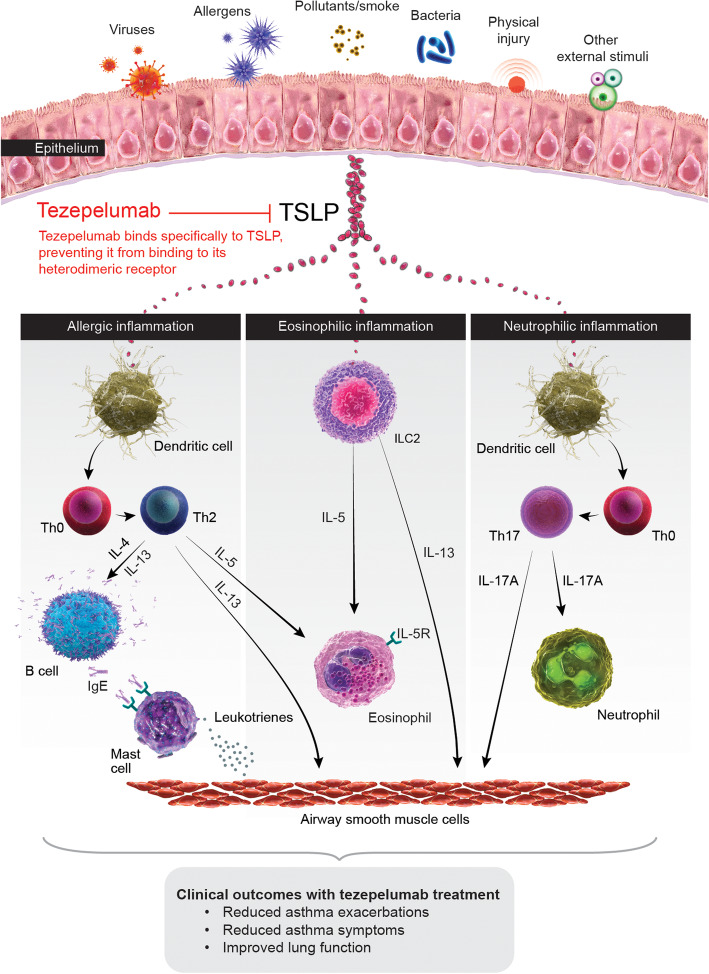Fig. 1.
Mechanism of action by which tezepelumab improves clinical outcomes in patients with severe asthma. TSLP is released from the airway epithelium in response to insults such as viruses, allergens and pollutants, triggering an inflammatory cascade. Overexpression of TSLP can result in pathologic inflammation that can lead to asthma exacerbations, symptoms, and physiological effects such as bronchoconstriction and airway hyperresponsiveness and remodelling. Tezepelumab specifically blocks TSLP from binding to its heterodimeric receptor, thereby inhibiting the production of various inflammatory cytokines and cell types. Treatment with tezepelumab has thus far been shown to reduce eosinophils, IgE, IL-5, IL-13 and FeNO. FeNO, fractional exhaled nitric oxide; IgE, immunoglobulin E; IL, interleukin; ILC2, type 2 innate lymphoid cell; Th, T-helper; TSLP, thymic stromal lymphopoietin

